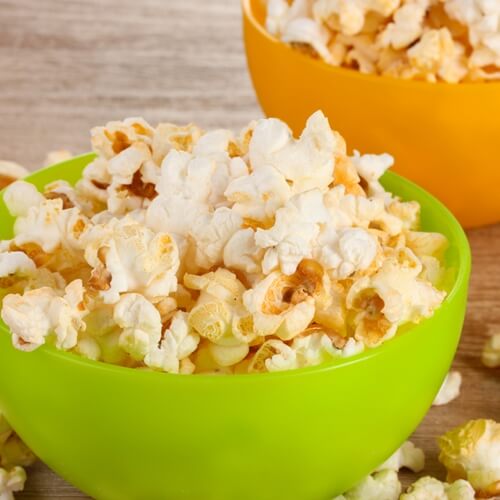Pop To It: 3 Tips For Perfect Popcorn Every Time

Whether summer or fall, popcorn seems to be a near-perfect snacking option. It’s a tasty treat that’s not only easy to prepare, but it’s one that also lends itself to a number of tantalizing tweaks and variations. Yet like so many other dishes, making popcorn is sort of an art, and even a few simple adjustments can make good kernels truly great. So, before you simply nuke some store-bought popcorn, consider a few of the following tips and tricks for making a bag of your very own. Having these skills should make you quite pop-ular with both your friends and fellow chefs alike.
Know your corn
Generally speaking, there is a wide variety of corn already available on the market, and each one has its own unique benefits when it comes to popcorn. Here are just a few of these varieties, according to Preferred Popcorn:
- Mushroom popcorn: This kind is round in shape and requires higher temperatures for popping. It’s best suited for flavor coatings, including chocolate and caramel.
- Butterfly popcorn: These kernels are more flat and flake-like than mushroom popcorn. This is the preferred option if you’re using hot oil to cook.
- Gold popcorn: Generally, gold popcorn has a much higher number of total servings compared to other kernels. Because of its large flakes, it’s noted for both its taste and aesthetic look.
No matter the variety, you’ll only need about half a cup of kernels. Properly popped, this should result in 20 or so servings of popcorn.
Culinary & Pastry Career Survey
Culinary & Pastry Career Survey
What's your ideal culinary career? Answer 20 simple questions and see if your dream career gets revealed to you.

We’ve compiled of all of the essential questions into one handy guide: Career options, description of skill requirements, and more!


The oil matters
On the one hand, using a microwave or popcorn machine is much faster than the stovetop method. In fact, most machines will allow you to make up to 40 bags of popcorn with just a cup of kernels and a few minutes of time. However, the stovetop approach really allows you to control how well your popcorn cooks, and many aficionados will even say that oil tastes better overall. If you opt for popping on the stove, you need to consider what oil to use. Your best bets are either peanut or vegetable oil, both of which can withstand the high heat of the popping process. Some individuals have tried to use water or butter instead of oil, as either are less expensive options. However, as The Kitchen explained, water and butter will only burn the kernels. It’s worth noting that oil does the same, but you can avoid burnt kernels by continually moving them around in the pan.
Picking your pan
Much like your choice of oil, the pan you use can also make a difference in the overall quality of your popcorn. As a rule, try to use a heavy-bottomed pan, which will prove to be far more heat conductive than other pots. However, it’s always a good idea to test the heat before cooking your corn. To that end, you’ll want to use three test kernels: Once they’ve begun to spin around in the oil, then you can add the remainder of the corn. However, don’t go overboard either as you’ll only need enough kernels to cover the very bottom of the pan. Any kernels that don’t pop – often referred to as “old maids” – simply don’t have enough water content to properly pop. Instead of throwing them out, allow them so soak in a cup of water for a few days, which should help to raise their moisture content.
Play around with even more popcorn tips when you enroll in culinary academy.


